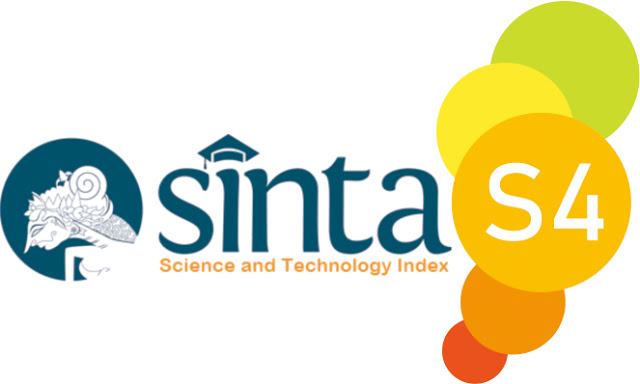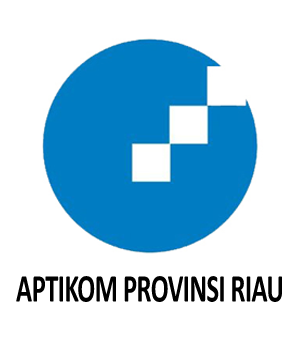Database Consistency Improvement In Job Offering System Using Normalization Method
Abstract
The role of information systems in modern life today is very important, especially in a company to make strategic decisions or actions. Information systems must be free from data anomalies. Data anomalies can occur due to poor database structure design. This happens in job offering systems that still have data anomalies. This study uses the normalization method to verify the quality of the database in the job offering system. Normalization is a technique that focuses on grouping several attributes into an entity based on certain criteria to achieve normal form. Normalization aims to maintain data consistency and integrity. The job offering information system has two databases to carry out all its functions. The first database is for the needs of processing job offering information system data. The second database is for the needs of processing company organizational structure data. This study has identified both databases of the job offering system. There are 2 violations of the normalization provisions found. Violations occur in the employee and schedule_wwc tables which do not follow the 3NF normalization provisions. Improvements need to be made to the database to improve data consistency in the job offering system. This study has made improvements by modeling data according to the data needs of the job vacancy information system. The modeling produces a conceptual data model (CDM), a logical data model (LDM) and a physical data model (PDM). The modeling results have been reverified using the normalization method and are free from any violations.
Downloads
References
Ying Bai and Satish Bhalla, “Introduction to Databases,” 2021. doi: https://doi.org/10.1002/9781119608493.ch2.
Konrad Fraczek and Malgorzata Plechawska-Wojcik, Comparative Analysis of Relational and Non-relational Databases in the Context of Performance in Web Applications, vol. 716. in Communications in Computer and Information Science, vol. 716. Cham: Springer International Publishing, 2017. doi: 10.1007/978-3-319-58274-0.
N. Gupta and R. Agrawal, “NoSQL Security,” in Advances in Computers, vol. 109, Academic Press Inc., 2018, pp. 101–132. doi: 10.1016/bs.adcom.2018.01.003.
M. Albarak and R. Bahsoon, “Prioritizing Technical Debt in Database Normalization Using Portfolio Theory and Data Quality Metrics,” 2018.
R. Foorthuis, “On the nature and types of anomalies: a review of deviations in data,” Oct. 01, 2021, Springer Science and Business Media Deutschland GmbH. doi: 10.1007/s41060-021-00265-1.
S. Saha Bagui, “Database Design Using Entity-Relationship Diagrams (3rd Edition),” 2023.
Kunal Kumar and S. K. Azad, Database Normalization Design Pattern. 2017.
M. Albarak, R. Bahsoon, I. Ozkaya, and R. Nord, “Managing Technical Debt in Database Normalization,” IEEE Transactions on Software Engineering, vol. 48, no. 3, pp. 755–772, Mar. 2022, doi: 10.1109/TSE.2020.3001339.
N. Mendjoge, A. R. J. Meera, N. D. J. Sanghvi, and D. J. Sanghvi, “Intelligent Tutoring System for Database Normalization,” 2016.
Kamal Hingorani, Dexter Gittens, and Nicholas Edwards, “REINFORCING DATABASE CONCEPTS BY USING ENTITY RELATIONSHIPS DIAGRAMS (ERD) AND NORMALIZATION TOGETHER FOR DESIGNING ROBUST DATABASES,” Issues In Information Systems, vol. 18, no. 1, pp. 148–155, 2017, doi: 10.48009/1_iis_2017_148-155.
R. Elmasri and S. B. Navathe, “Fundamentals of Database Systems 7th,” 2015.
L. Davidson, Pro SQL Server Relational Database Design and Implementation: Best Practices for Scalability and Performance. Springer, 2020. doi: 10.1007/978-1-4842-6497-3.
Jeffrey A. Hoffer, V. Ramesh, and Heikki Topi, “Modern Database Management 12th Edition,” 2015.
Laura Sebastian and Coleman, “Meeting the Challenges of Data Quality Management,” 2022.
R. T. Yarlagadda, “DATA MODELS IN INFORMATION TECHNOLOGY,” 2016.
S. Al-Fedaghi, “Conceptual Data Modeling: Entity-Relationship Models as Thinging Machines,” Sep. 2021, doi: 10.22937/IJCSNS.2021.21.9.33.
R. Sherman, Business intelligence guidebook : from data integration to analytics. 2014.
Rahmawati Titik, Yulia Sari Eka, Tanjung Shakti Anjasmara, and Nanda Yomura Atthaya, “ANALISIS PERANCANGAN DATABASE MANAGEMEN SISTEM UNTUK SISTEM PENUNJANG PROSES BISNIS WEDANG UWUH INSTAN (ANALYSIS OF SYSTEM MANAGEMENT DATABASE DESIGN FOR INSTANT WEDANG UWUH BUSINESS PROCESS SUPPORT SYSTEMS),” 2023.
Matthew West, “Developing High Quality Data Model,” 2011.
J. V Luisi, “Pragmatic Enterprise Architecture,” 2014.
S. Dwivedi, L. Chourasiya, A. Professor, and M. Bhopal, “Data Modeling: A Perspective In Changing Database Scenario,” 2022. [Online]. Available: http://www.webology.org
R. Elmasri and S. B. Navathe, “Fundamentals of Database Systems 6th,” 2010.
A. Fahmi and Y. H. Putra, “Database Migration Strategies and Techniques to Minimize Unexpected Dysfunctionality,” in IOP Conference Series: Materials Science and Engineering, Institute of Physics Publishing, Nov. 2019. doi: 10.1088/1757-899X/662/6/062003.
A. Abdou Hussein, “Data Migration Need, Strategy, Challenges, Methodology, Categories, Risks, Uses with Cloud Computing, and Improvements in Its Using with Cloud Using Suggested Proposed Model (DMig 1),” Journal of Information Security, vol. 12, no. 01, pp. 79–103, 2021, doi: 10.4236/jis.2021.121004.
Johny Morris, “Practical Data Migration,” 2020.
N. W. Trisnawaty, A. N. Hidayanto, and Y. Ruldeviyani, “Database and Application Migration in the Financial Services Industry Sector in the Acquisition Environment and Environmental Science,” in IOP Conference Series: Earth and Environmental Science, IOP Publishing Ltd, Mar. 2021. doi: 10.1088/1755-1315/700/1/012022.
Copyright (c) 2025 Fahrir Rijal Fahmi Maulana, Febriliyan Samopa

This work is licensed under a Creative Commons Attribution-ShareAlike 4.0 International License.
This is an open-access article distributed under the terms of the Creative Commons Attribution-ShareAlike 4.0 International License which permits unrestricted use, distribution, and reproduction in any medium. Users are allowed to read, download, copy, distribute, search, or link to full-text articles in this journal without asking by giving appropriate credit, provide a link to the license, and indicate if changes were made. All of the remix, transform, or build upon the material must distribute the contributions under the same license as the original.















